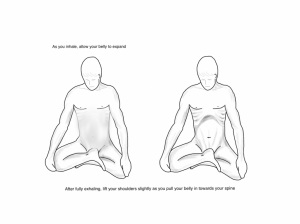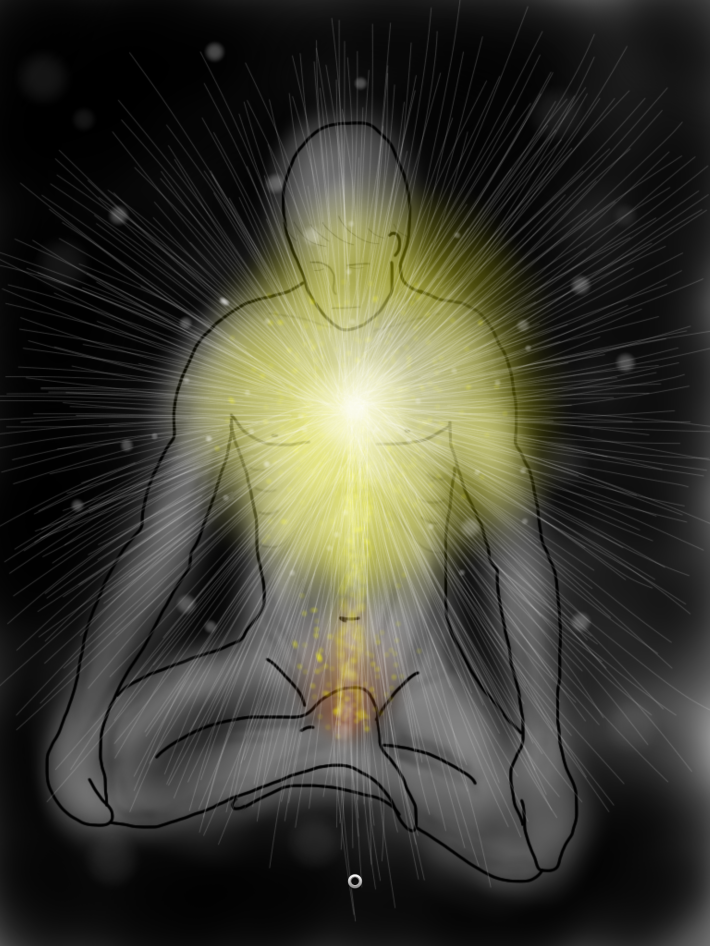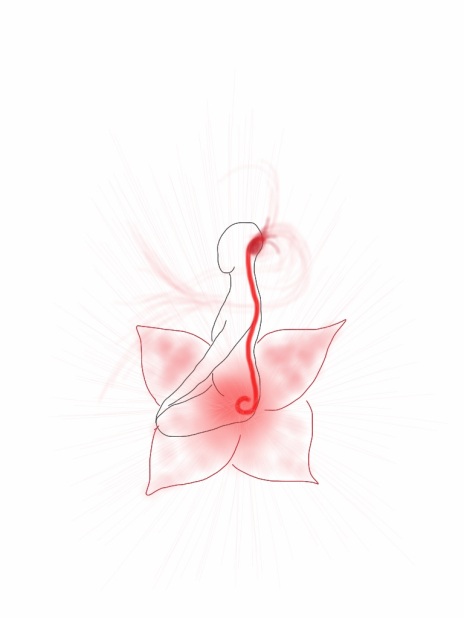So, there you have it. If you want to accelerate your practice, or just add a powerful anti-stress technique to your repertoire, introduce this to your daily routine. You’ll see the benefits in a few weeks 🙂
Tag Archive: Pranayama
PDF Download: YOGA MANUAL
Word Download: YOGA MANUAL
I finally got around to “kind of” finishing this (still a few bits not done, plus the entire thing needs revision and editing). Anyway, if you’re into yoga, meditation, and/or self development this might be something you’d be interested in. Email me any questions you have about the practices 😉 Enjoy
Actually, stress makes you stupid, sick, and smelly.
Now that’s a good incentive to learn to relax and destress with slow, deep breathing. So why does stress make us stupid, sick, and smelly? We can answer that question by looking at why we get stressed in the first place.
Stress is your body’s natural reaction to a threat to your safety and wellbeing. A classic example is to look at what happens to you when you find yourself face to face with an aggressive dog. Your heart rate increases, your digestive system dramatically slows down, your pupils dilate, your blood pressure increases, your breathing becomes shallow and fast, you begin to sweat, and your muscles and heart become engorged with blood as your skin turns pale from the blood being redirected. All of these things happen because of the release of stress hormones preparing your body for fight or flight in response to a threat. In the short-term this type of response can save your life, however, if you experience stress every day, all day, because your boss happens to be an asshole that bullies and abuses you, or you have an aggressive partner, etc, then that type of reaction going on in your body all the time is unsustainable. Eventually you’ll burn yourself out.
From a health point of view, being in a continuous state of stress strains your heart, increases your chances of having a stroke due to high blood pressure, and lowers your immune function because all of the body’s energy is being used elsewhere, which increases your susceptibility to infection and even increases your risk of getting cancer. Where health is concerned STRESS is your body’s enemy.
The effects of stress don’t just stop with the body, they spill over into the realms of the mind. When you get stressed the flow of blood in your brain decreases in your frontal lobes and is redirected to your hind brain and emotional brain. This means your ability to think rationally and plan ahead is severely hampered. Essentially stress turns you into a puppy. Seriously, when you’re under stress you act more like a puppy than a human. This is why it’s never a good idea to make decisions when you’re under stress unless you absolutely have to.
What about smelling bad? Think about the original example of the dog, or maybe it’s a lion or a bear. When you get stressed, your body will begin to sweat. The more stressed you are the more profusely you’ll sweat. Why? Two reasons. One, sweating lubricates your body and makes it easier to escape the grip of whatever it is your faced with, and secondly, when you get stressed the sweat you excrete tends to smell bad. That’s not a great thing if your on your way to your new girlfriend/boyfriend’s house to meet your future parents in law! But it’s very useful when you’re faced with a predator that wants to eat you for dinner because when food smells bad, it’s a sign that it’s gone off. And even animals don’t like to eat food that will make them sick.
So there you have it. Stress makes you stupid, sick, and smelly. WHat can you do about it. Simple. Learn to slow your breathing and you’ll be able to control your stress levels 😉
I love how some of the simplest yoga practices turn out to have the most profound effects upon me.
Most people think of yoga as sets of excruciatingly painful postures followed by hours of meditation and strange cleansing rituals. And while this is how some people like to practice “yoga,” there’s also an entirely different side to this fascinating way of life that most people never even realise exists. That way is simplicity itself. It’s such a deceptively simple path that when you’re on it you wake up one morning wondering how you’ve made so much progress with such little effort. It’s a way of practicing yoga that I like to call the path of the five kings.
The five kings are a set of simple practices. They’re what the ancient yogic texts describe as practices that can bring about liberation without the need to do anything else. Those practices are: Siddhasana (the perfect posture), Bramacharya (moderation), Ahimsa (nonviolence), Kevala (breath suspension), and Kechari (mudra of the void).
How do they work?
Siddhasana (perfect posture) is a basic sitting posture used by yogic adepts, when meditating, in which the heel of one foot is placed against the perineum (between the anus and genitals) with the second foot resting in front of the first (or, in an advanced posture, pressed against the pubic bone).
So what’s so special about siddhasana? Apart from providing a stable sitting position for meditation, the position the feet are placed in causes the mind to drift into a naturally meditative state. This happens for two reasons. Firstly, the blood flow to the legs is lessened which leaves more blood flowing in the upper body, keeping the mind alert and focused, and secondly the pressure applied to the nerves in the perineum has an interesting effect on the breathing centres at the base of the brain that cause the breathing to become light, slow, and steady. And slowing the breath, as we know, calms the mind (I’ve discussed at length in previous posts).
Isn’t that amazing. Simply changing the way you sit can catapult you forward on the path of yoga.
The second king, as I call it, is Ahimsa (nonviolence). This, for me, is a no-brainer. It’s quite simple really, by practicing nonviolence we’re cultivating a state of mind that’s conducive to peace, and a mind that’s at peace is a mind free of turmoil, a mind that naturally gains stability and focus (traits essential for progress to be made in meditation).
Bramacharya (moderation) is the third king. By practicing moderation we’re wiring the brain in a very specific manner. We’re wiring it in a way that allows us to exercise tremendous control over our thoughts (an essential ability we need to develop if we want to meditate correctly). The other element of Bramacharya is more physical. It says that every yogi, who wants to make progress, should moderate their food intake. The reasoning for this is simple and really obvious once you think about it. When you eat , your body directs its energy into the digestive processes. The more food you eat and the more time you spend eating it, the more energy it uses. When your body is busy digesting food the mind becomes dull and tired and incapable of meditating. So simply eating in moderation has powerful effects on your state of mind.
The fourth king is Kevala. Kevala is a special type of breath suspension that happens spontaneously when the yogi reaches deep levels of concentration, meditation and absorption. This is a state I’ve experienced many times during deep meditation. it feels as if there is no need to breathe in or out, your lungs stop moving but it feels as if the air around you still permeates them. What’s interesting about this is that we can trigger deep states of meditation by consciously slowing the breath so that it becomes barely perceptible. Although this isn’t technically kevala, it does apply the same idea. Amazing results come from this simplest of practices.
The fifth and final king is Kechari mudra which I’m not going to go into details about here because I’ve spoken about it at length in a number of previous posts.
So there you have it. Simply changing the way you sit, altering your eating habits, cultivating nonviolence, and slowing your breathing, promotes a powerful effect on your mind – acting like rocket fuel on your yogic journey.
More concept art. This illustrates how changing our breath rhythm influences the nervous system, and subsequently the mind. In essence, fast breathing creates stress and agitation of the mind, whereas slow breathing creates a calm and content mind.
Useful to know in a modern world filled with manufactured stress and fear.
 Uddiyana bandha awakens the emotional centres of the brain and allows the heart to expand. It can be applied in one of two ways. The first and most commonly used method is to apply it while holding the breath out. While the second method is to apply it while the breath is being held in.
Uddiyana bandha awakens the emotional centres of the brain and allows the heart to expand. It can be applied in one of two ways. The first and most commonly used method is to apply it while holding the breath out. While the second method is to apply it while the breath is being held in.
Here’s the basic method:
- Sitting or standing, place your hands on your knees.
- Take a deep breath in, then fully exhale all of the air from your lungs.
- Holding the air out, bend forward slightly and, pushing down on your knees, draw your abdomen back in and up, towards your spine.
- Hold this position for as long as is comfortable. Then contract your abdomen and slowly inhale. Repeat steps 1 to 4.
When first starting this practice stick with five repetitions t the most, then gradually increase. While the effects on the physical body are obvious, what’s happening to the nervous system, brain and subtle energies isn’t so obvious. As I said before, Uddiyana bandha lights up the emotional centres of the brain. So it’s probable that you’ll experience an emotional type of cleansing once you start using the practice regularly. Although in the beginning this can feel a bit like regressing back to your teenage years, it eventually settles down and when it does your emotions become much more stable and are expressed without attachment. So slow and steady is the best practice.
Now for the second method:
Sitting or standing, place your hands on your knees.
- Begin to inhale, and as you do, draw your abdomen in and up towards your spine. Hold this position for as long as you can comfortably hold your breath.
- Exhale while allowing your abdomen to relax into its normal position. And that’s it.
So why use the second method? Well applying uddiyana bandha in this way allows us to combine it with mula bandha to create a powerful pumping action on the subtle energies of the body. this way Uddiyana becomes a very dynamic practice that has a powerful stimulating effect on the mind’s evolution and expansion into self realisation.
Tip
I like to do a few rounds of the basic form of Uddiyana bandha first thing in the morning before any other practices. This creates space for the lungs to expand during breathing techniques and calms the mind in preparation for meditation.
This is a short animated video I made to Illustrate the flow of energy during the practice of Uddiyana Bandha.
We can greatly enhance the effects of mula bandha by altering the angle of our pelvis during our practice. To do this, we simply tuck our pelvis forward as we draw the perineal muscles up during the inhalation phase of our breathing cycle.
Then, as we exhale and release the muscle contraction of mula bandha, we tilt our pelvis back by sticking out our bum (just a little).
This simple, dynamic structural addition to the muscle contraction of mula bandha dramatically increases the stimulation of the pelvic nerve structures, while acting as a pump for the cerebrospinal fluid. The resulting effect is a dramatic increase in the energy flow in the spinal channel (sushumna) along with stronger stimulation of the lower brain structures, resulting in a deeper, more expanded state of mind.
*I just wanted to add this bit of information before moving on to the other bandhas. There are a few other things we can do to enhance the energy flow when practising mula bandha, however, these become more applicable at a later stage.
Enjoy the practice and the energy and peace it brings into your life 🙂









